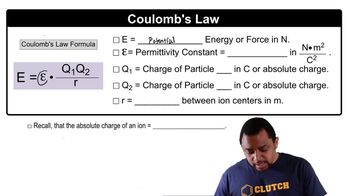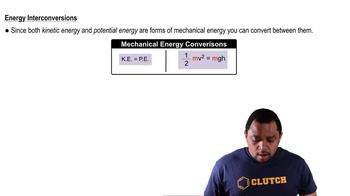Here are the essential concepts you must grasp in order to answer the question correctly.
Coulomb's Law
Coulomb's Law describes the electrostatic interaction between charged particles. It states that the force between two charges is directly proportional to the product of the magnitudes of the charges and inversely proportional to the square of the distance between them. This principle is essential for understanding how the potential energy changes as the distance between charged particles, like electrons, varies.
Recommended video:
Potential Energy in Electrostatics
In electrostatics, the potential energy (U) between two point charges is given by the formula U = k * (q1 * q2) / r, where k is Coulomb's constant, q1 and q2 are the charges, and r is the distance between them. As the distance increases, the potential energy decreases for like charges, indicating that they become less repulsive as they move apart. This concept is crucial for calculating the change in potential energy when the distance between two electrons is altered.
Recommended video:
Kinetic & Potential Energy
Change in Potential Energy
The change in potential energy (ΔU) when the distance between two charges changes can be calculated by finding the potential energy at the initial and final distances and taking the difference. For two electrons, as the distance increases from a smaller value to 1.0 nm, the change in potential energy will reflect the work done against the electrostatic force. Understanding this change is key to answering questions about energy transformations in electrostatic systems.
Recommended video:
Kinetic & Potential Energy
 Verified step by step guidance
Verified step by step guidance


